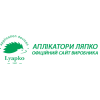Osteochondrosis of the thoracic and lumbosacral spine
1 What is spinal osteochondrosis. Causes of occurrence.
4 Prevention. Stretching of the spine.
5 Massage and application therapy Lyapko
What is spinal osteochondrosis. Causes of occurrence.
Osteochondrosis is a degenerative-dystrophic disease of the spine, which is based on damage to the intervertebral discs, accompanied by their progressive deformation, decrease in height and stratification, leading to reactive processes in the surrounding tissues.
Gradually, losing its elastic properties, the disk flattens. As a result, the distance between the vertebrae decreases, and the nerve roots extending from the spinal cord are clamped - pain occurs, edema begins to increase in the area of clamping of the neurovascular bundle, which leads to even greater infringement and increased pain.
Causes
The very mechanism of development of osteochondrosis is associated by specialists with a decrease in the depreciation functions of the intervertebral discs and damage to the fibrous ring, which leads to disc protrusion, and if the fibrous ring is ruptured, to an intervertebral hernia.
Causes of osteochondrosis:
- hereditary (genetic) predisposition;
- metabolic disorders in the body, infections, intoxications;
- overweight;
- malnutrition (lack of trace elements and fluids);
- age-related changes;
- spinal injuries (bruises, fractures);
- violation of posture, curvature of the spine, instability of the segments of the spinal column, flat feet;
- adverse environmental conditions;
- sedentary lifestyle;
- work associated with lifting weights, frequent changes in the position of the body (turns, flexion and extension, jerky movements);
- prolonged position in an uncomfortable position standing, sitting, lying down, when lifting and carrying heavy loads;
- excessive physical activity, unevenly developed musculoskeletal system;
- overload of the spine associated with diseases of the foot, as well as as a result of wearing uncomfortable shoes, high heels and pregnancy in women;
- abrupt cessation of regular training by professional athletes;
- nervous tension, stressful situations;
- smoking.
Symptoms of osteochondrosis
- constant aching back pain, numbness and aching limbs;
- increased pain during sudden movements, physical activity, weight lifting, coughing and sneezing;
- decreased range of motion, muscle spasms;
- with osteochondrosis of the cervical spine: pain in the arms, shoulders, headaches. It is possible to develop the so-called vertebral artery syndrome, which consists of the following complaints: noise in the head, dizziness, flickering of “flies”, colored spots before the eyes, combined with a throbbing headache;
- with osteochondrosis of the thoracic spine: pain in the chest (like a “stake” in the chest), in the region of the heart and other internal organs;
- with osteochondrosis of the lumbosacral spine: lower back pain radiating to the sacrum, lower limbs, sometimes to the pelvic organs;
- damage to the nerve roots (with herniated intervertebral discs): shooting pain and impaired sensitivity, decreased reflexes.
What does reflexology say?
According to Chinese philosophy, in the human body, as in the entire universe, an invisible subtle energy called "qi" circulates. Qi is the Chinese equivalent of the word "breath". Energy moves through special channels, just as blood flows through the blood vessels, and lymph through the lymphatics. It is believed that the circulation of blood through the vessels is also provided with energy. When the flow of energy is interrupted, the person dies. Energy channels are invisible to the eye. There are many of them in the human body, and the central part forms the main energy channel, which is located in the spine. That is why we can call the spine the support of the body, both literally and figuratively.
Spinal problems reflect the lack of support in life from relatives and friends. You have taken everything upon yourself, you perceive life as an unbearable burden, the constant transfer of hardships. Fear for money, how to earn it, how to improve your financial situation, leads to problems with the lower back. From people with osteochondrosis of the spine, you can often hear such phrases in a conversation: “This is an unbearable burden for me. He took everything on his shoulders. This is my “cross” and I have to carry it through my whole life.”
How to help yourself? Before you take on other people's problems on your shoulders, first deal with your own life. Change your worldview, learn to see how the Universe supports and takes care of you all your life.
You can engage in self-hypnosis. Write yourself a list of affirmations - short phrases containing a verbal formula, which, when repeated many times, fix the required image or attitude in the subconscious of a person, helping to improve his psycho-emotional background and stimulating positive changes in life. For example: “I get joy from communicating with loved ones”, “Every year I become healthier, I love my body, health”, “Day and night I receive support in all matters”, etc. Only our attitude to life transforms her into a bind. You need to learn to take care of your loved ones with a sense of joy and love.
Prevention. Stretching of the spine.
Prevention:
- always keep your back straight;
- try not to lift heavy objects, if necessary, then lift them crouching, and not bending over;
- move more often, do not let your back muscles atrophy;
- hang on the horizontal bar as often as possible and swim;
- regularly do a set of exercises for osteochondrosis of the spine.
Spinal traction
Each person should begin the restoration of their physical health from the spine.
In the morning, after waking up, without getting out of bed, you need to stretch, as if stretching the spine. Bend your knees and make smooth turns from side to side.
Morning exercises, sports training should begin and end with stretching of the spine. Stretching should also be done after lifting weights or falling.
One of the simple methods of stretching the spine at home.
You should start by lifting the vertebrae. It is best to take the starting position while sitting on a hard chair. You can stand or lie on the floor. Place your palms on your upper thighs, resting your wrists on your lower abdomen. Focus on the spine. Start lifting from the coccyx. Bend in the lower back, imagine that the sacrum takes a horizontal position, like a cat's tail. In this position, the lumbar, thoracic, cervical vertebrae can easily rise and muscle tension in the back will be relieved.
Slowly, resting your hands on your hips, straighten your back and reach up. Then relax your shoulders and stretch your neck up, more the back of your head than your jaw, so that all the muscles of the upper body are tensed.
Such exercises can be done as needed with the appearance of fatigue in the back, you can 5-10 times a day.
With regular exercises, you can achieve traction, alignment of the spine and at 70 years old.
Massage and application therapy Lyapko
Ancient doctors believed that massage could lift a hopelessly ill person to his feet. At all times, he maintained in people good spirits and flexibility of the body. In ancient times, massagers were made of silver, gold and precious woods. Such a gift served as a sign of special disposition and was available only to the elite.
“Movement is life,” they always said, and this is true: the health of the musculoskeletal system is the basis of overall human health. The benefit of a good massage is that it helps to restore blood circulation and lymph flow in the skin and muscles, and at the same time in the skeletal system. And also entails an improvement in the process of self-regulation of the body as a whole. Massage awakens the forces inherent in nature, which helped humanity survive in the harsh ancient times.
Nowadays it is difficult to imagine an ideal healthy lifestyle. People have to specialize in something, which leads to the lack of demand for some body systems, and they cease to play their role in human life support. And if there is no participation in the overall process of any node of the system, then any self-regulating system will fail sooner or later.
It is known that many diseases arise as a result of a violation of the movement of energy through energy channels or meridians - when energy is in excess in some places, and it is lacking in others. In those places where excess energy has accumulated, muscle overstrain occurs, and the functions of other body systems are disrupted, resulting in compression of the upper receptors of the nerve trunks. This entails degeneration of the neuromuscular system. Further, the above section passes into the area of lack of energy. This site is not able to effectively remove harmful substances from the body, which entails the creation of conditions for the occurrence of edema, benign tumors, often turning into malignant ones. If excess energy accumulates in the endocrine glands, the hormonal balance in the body is disturbed.
Massage is designed to restore harmony in the system. You can prepare the body for massage (warm up) using the “Large Roller” or “Universal Roller”.
Rollers are Lyapko's application devices for dynamic use (a millionth “needle shower”). The therapeutic effect is achieved several times faster than when using a static (flat) applicator. The galvanic current that occurs in the skin, on the points and between the needles is of a pulsed nature.
First, roll with a roller along the spine, along the intercostal spaces on one side, until a uniformly pink color appears. Then we roll the second side in exactly the same way. Exposure time 3-7-10 minutes depending on the individual skin reaction

The essence of the method is to set the stagnant energy in motion, restore communication with the rest, normally functioning systems, adjust the energy balance and fix in the main nerve center the information that they can again work harmoniously in a normal, i.e. healthy mode. .
All these problems are solved quickly, reliably and efficiently by your "home doctor" - massager "Pharaoh" !
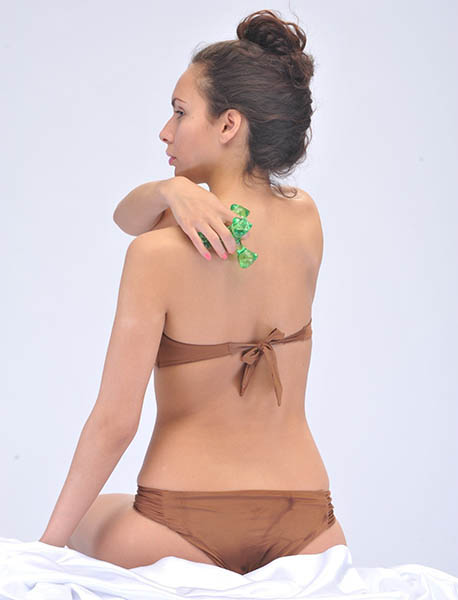
Massager "Pharaoh". Method of application
The massager can be used with different intensity. To do this, turn it so that the protrusions of the massager you have chosen are in the area of the working surface. The sharper the protrusions, the deeper and more intense massage they allow to produce.
Four types of massage intensity degree:
- light massage is a soft surface massaging with balls with a large radius (the base of the pyramid);
- a more pronounced massage is carried out by large hemispheres located on the main balls. In this case, the effect on the surface layers of the muscles occurs;
- deep massage is performed with cone-shaped protrusions with spherical tops. At the same time, the muscles are worked out to the full depth;
- highly effective massage - the most intense, serves for deep treatment of muscles, ligaments and massage to the periosteum. It is carried out with the sharpest cone-shaped protrusions.
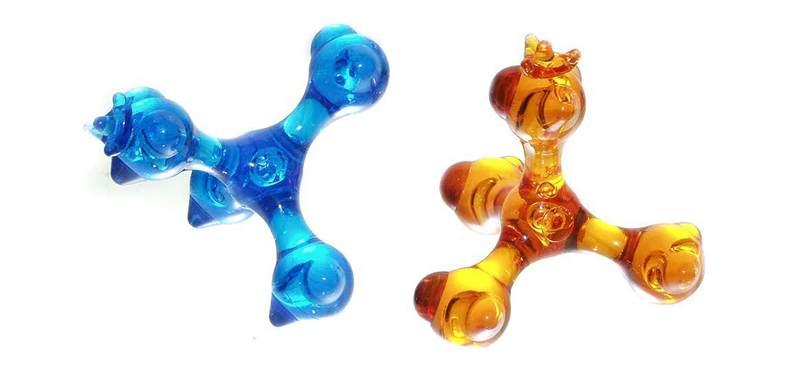
With a superficial massage with sharp cone-shaped protrusions, the effect of a light, very pleasant, “tickling” effect is achieved, turning into a state of true bliss.
The duration of the massage and its intensity determines the desired effect. Long, up to 15 min. and more, massage contributes to the complete relaxation of muscles, creates a sedative (calming) effect.
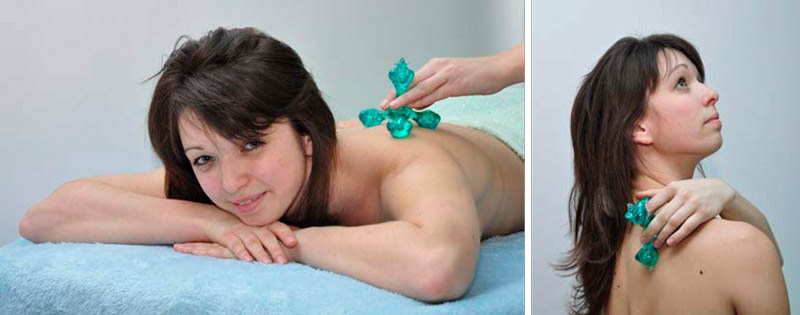
A short massage, 3-5-7 minutes, has a tonic (stimulating) effect. During the session, you should perform circular movements clockwise or longitudinal - up and down. To improve gliding, massage should be carried out through a thin cloth or light clothing. After the massage, we recommend laying on a flat applicator for rest and relaxation.
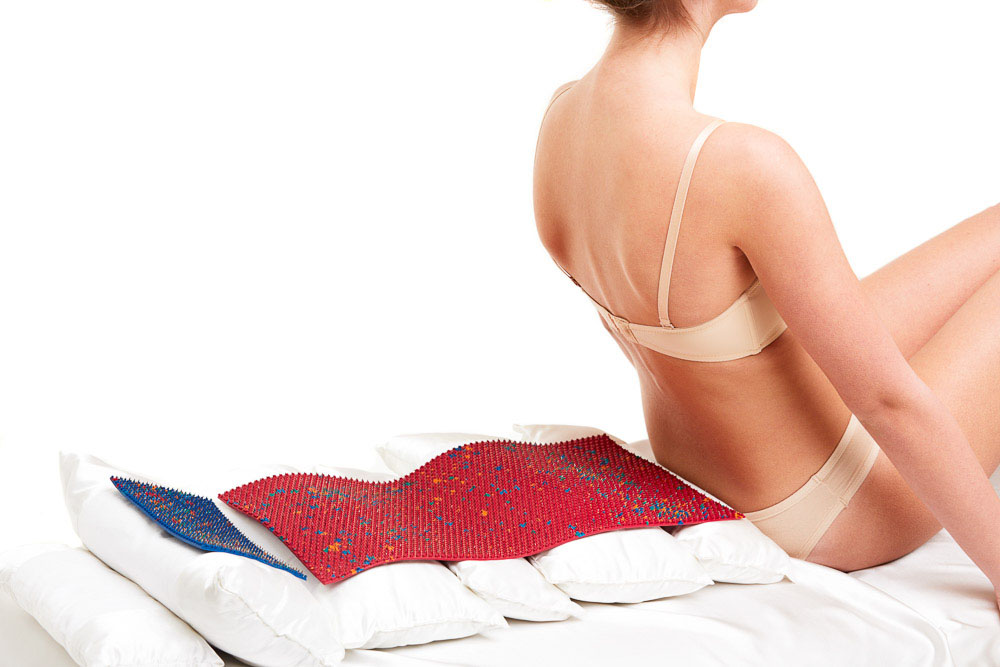
They lie on the applicators with their backs - they can be applied to the spine itself. Application areas: the entire area of the neck, back, lumbosacral. The larger the area of influence, the better the therapeutic effect. It is recommended to use large flat applicators. For better relaxation of the spine under the hips, you can additionally put small pillows. The duration of exposure is 30-40 minutes in the evening before going to bed. Immediately after the application treatment, the effect of relaxation of the muscles and ligaments of the spine occurs, the action and pleasant sensations in the body remain for a long time. In the application area, blood circulation is improved, the pores are “opened”, the application of anti-inflammatory, anesthetic creams, ointments contributes to better penetration into the skin, subcutaneous tissue, muscles and enhances their action.
If the procedure is carried out in the daytime, then bed rest is indicated for 1–2 hours in order to reduce the “weight load” on the spine. The vertical position immediately after treatment increases the load on the spine due to its own weight and reduces the effect of the procedure.
Ancient Chinese doctors treated emperors for back pain in the evening. The ideal time of day is considered to be the procedure at 21-23 hours, since immediately after treatment the patient falls asleep until the morning.
Neurological syndromes of osteochondrosis of the lower thoracic spine. Areas of application of Lyapko applicators
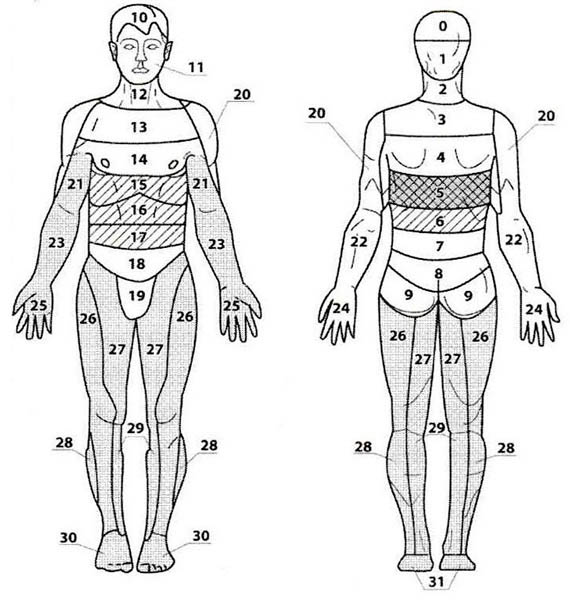
Fig.1
Application zones (Fig. 1): main 5; additional 6, 15, 16, 17; auxiliary 21, 23, (25), (28), 29, 30, 31
The following applicators are recommended. Options for applicators for the back and chest area (main and additional zones).
1. The applicator "Rug large" , "Massage needle large mat" , "Chance 6.2x4" , "Chamomile M" is applied to zones 5, 6 or 15, 16, 17.
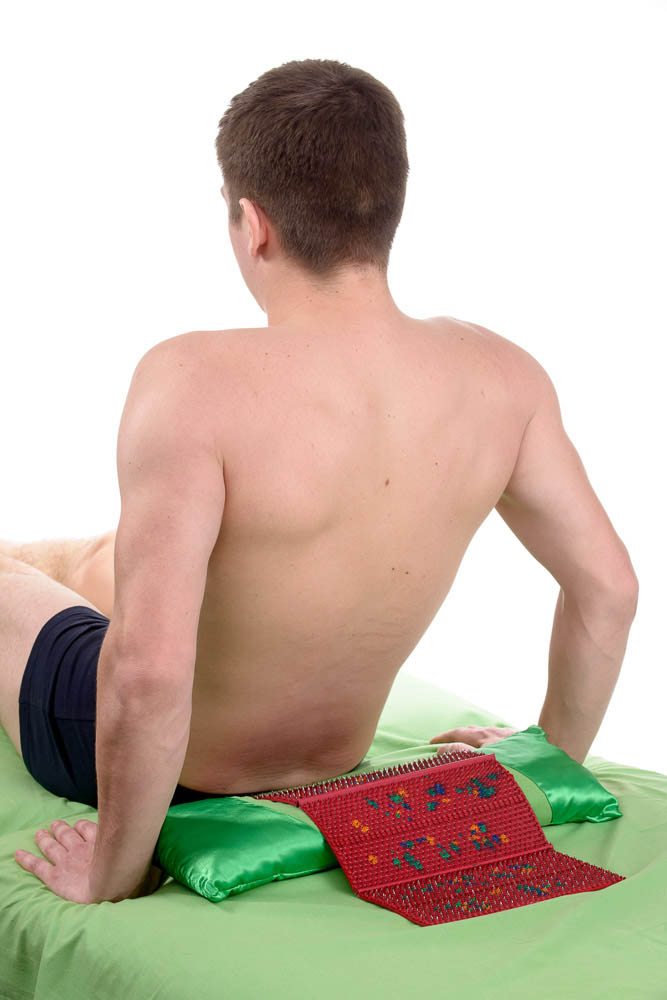
2. Applicator "Quadro" , "Chance" , "Folk" , "Needle massage pillow" , is placed along the spine with the capture of zones 5, 6 or across the back to zone 5, on the anterior surface of the chest, to zones 15, 16, 17 .
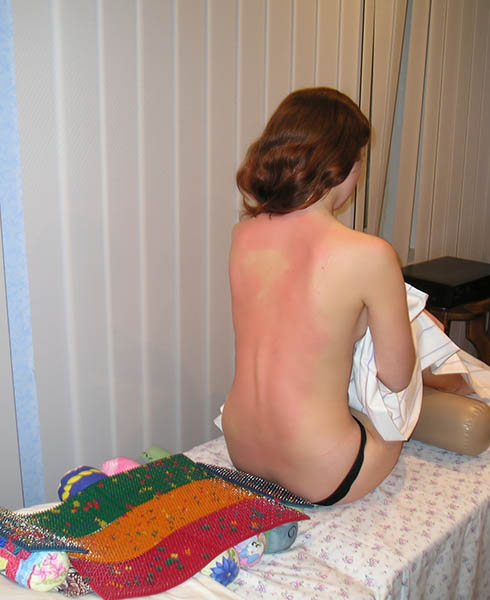
3. "Insoles plus" are applied along or across the spine to zones 5, 6 or 15, 16, 17 on the anterior surface of the chest.
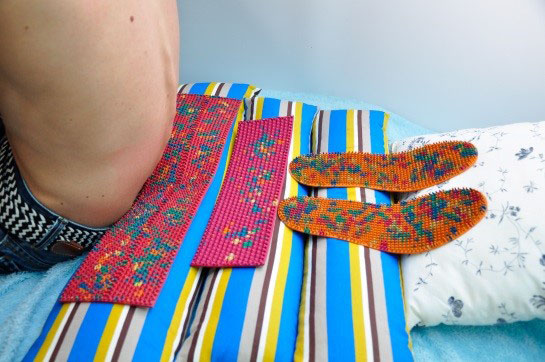
4. Belt "Kid" , Belt "Universal M" - is fixed across the spine to zone 5, along the spine to zones 5, 6 or is used in the prone position, like a regular applicator, to zones 5, 6 or on the front surface of the chest, on zones 15, 16, 17.

5. Run- in "Large Roller M" , "Universal Roller M" , "Face Roller M" , zones 5, 6, 15, 16, 17.
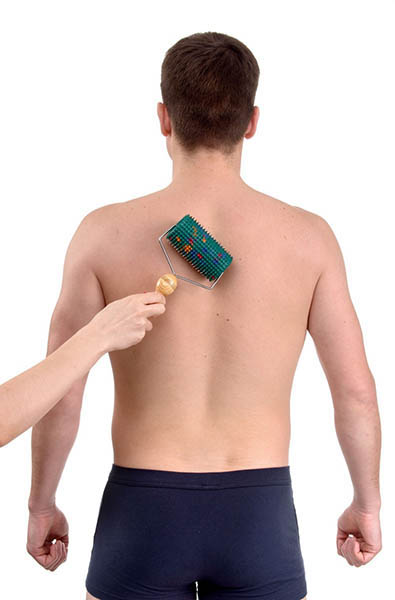
Lumbar - sacral sciatica, neurological symptoms of osteochondrosis of the lumbosacral region. Areas of application of Lyapko applicators.
Application zones (Fig. 2): main 7, 8; additional 9, 18; auxiliary 22, 26, 28, 30, 31.
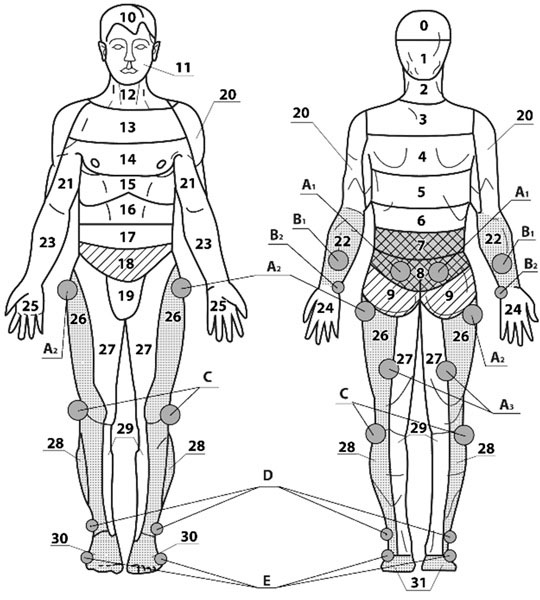
Fig.2
With neurological symptoms of osteochondrosis of the lumbosacral spine, correctly placed applicators lie on the lower back and place the applicators along the entire spine. With good tolerance, applicators can be placed over the entire area of the back, lower back and pelvis. For example, with pronounced, prolonged pain on the left in points A1, A 2 and l and A 3 (Fig. 2), it is not recommended to act on these points in the first days; it is advisable to act on the opposite or other underlying zones: first, we apply at points A1, A2, AZ + C on the right, and after 2–3 days, we act on all zones for 20–40 minutes using an applicator and 10–15 minutes using a roller. In the intervals between sessions, wearing small applicators for 1–3 hours at points A1, A2, AZ on the left, B1 on the right, B1 on the left, D on the right, E on the left (Fig. 2) can give a good effect.
Remember! A good therapeutic effect is achieved only with the correct implementation of the recommendations and the individual selection of zones and methods of exposure.
In chronic course and for the prevention of osteochondrosis of the lumbothoracic, lumbosacral spine, it is recommended to wear small applicators and application belts in places of greatest pain (lower back, sciatic nerve) - zones 26–28, 7–8.

In ischioradiculitis, it is good to briefly influence the symmetrical zone of the opposite leg - zones 26–28 on the left, the correspondence zones on the hands and feet (Su Jok therapy method).
Additional recommendations. For pain in the lower abdomen, in the sacrum, in the lower back, lower extremities, as well as in diseases and dysfunctions of the pelvic organs, applicators are used on the lumbar, sacro-buttock region - zones 7, 8, 9 (Fig. 2) on a 1 5 -30 minutes. You can enhance the effect by simultaneously placing the applicator under the shins. It is better to end the session with the application of the feet (5–10 minutes) using the Insoles Plus applicator.

In lumbosacral sciatica, the success of treatment depends on the approach (it must be individual and complex) and the choice of points, the method of exposure.
